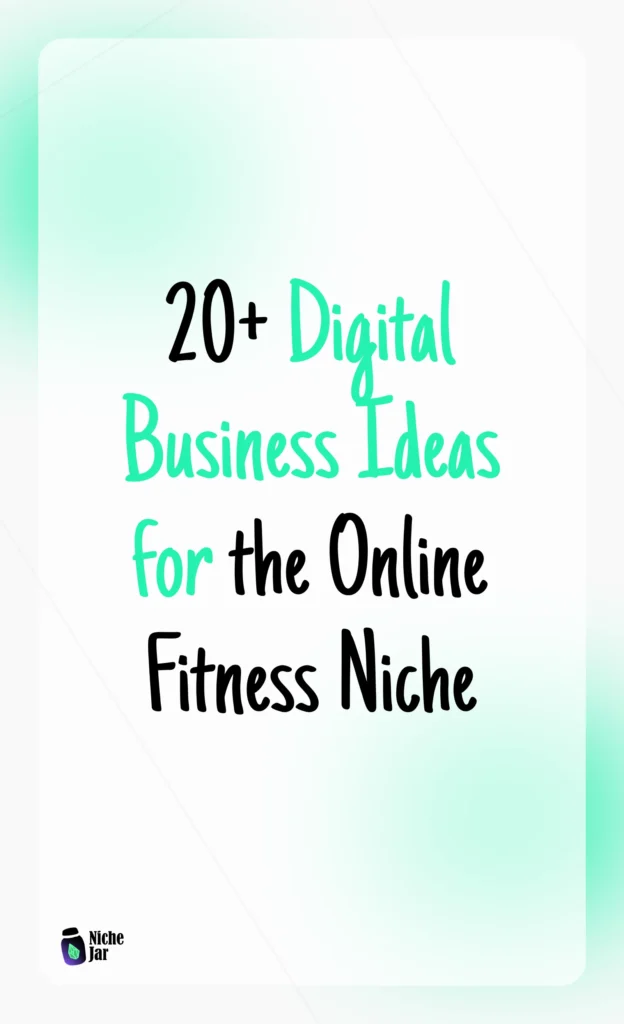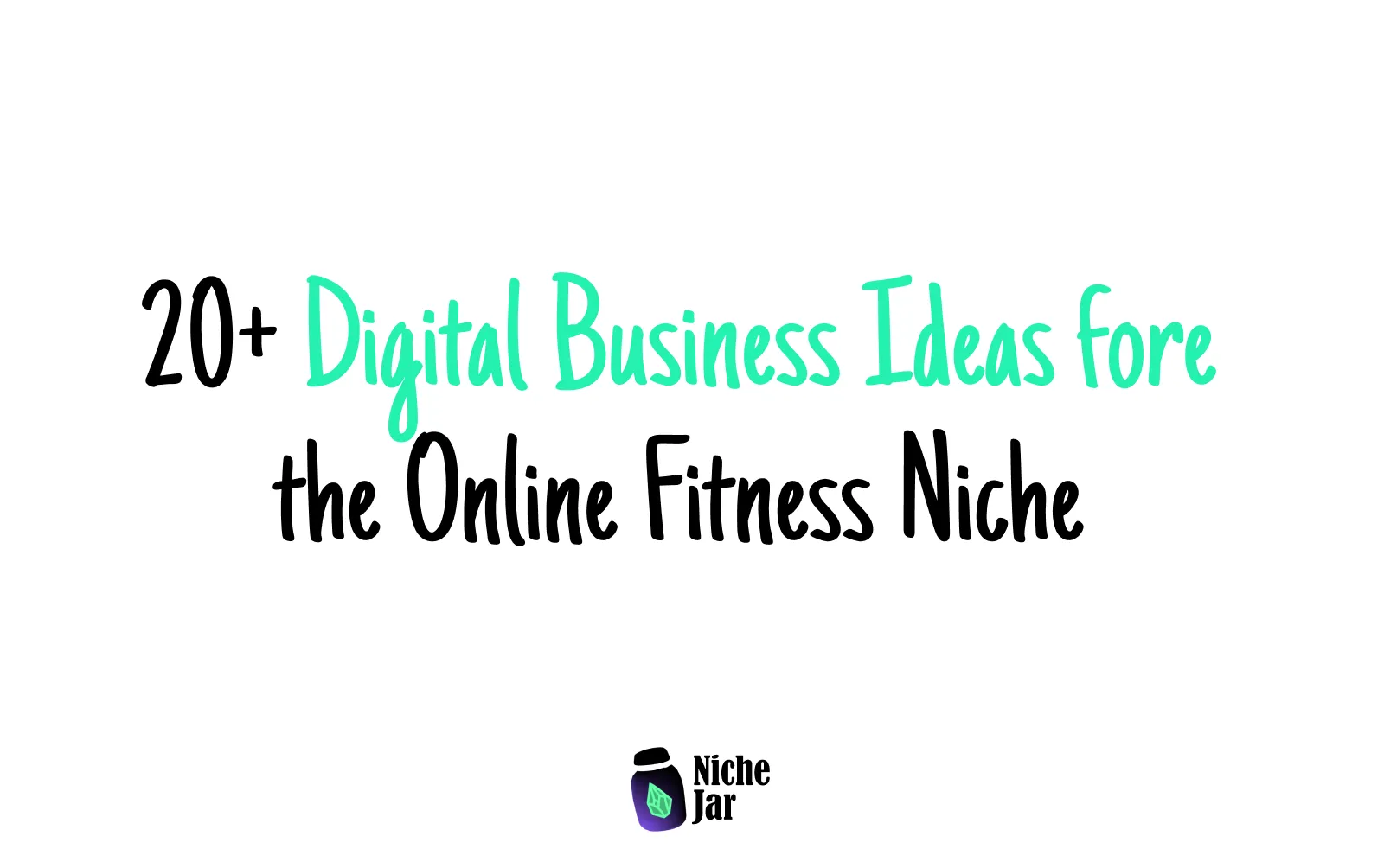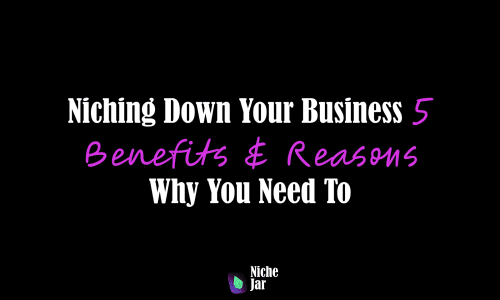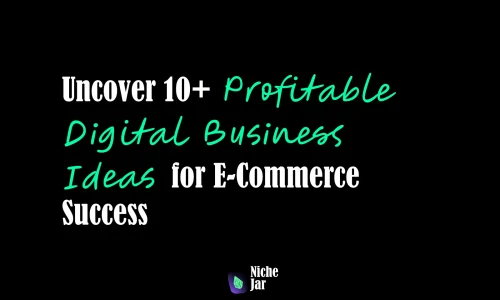- Senia
- 0 Comments
- 702 Views
Have you ever wondered if your passion for fitness could be turned into a sustainable online business? From what I’ve seen, the online fitness niche is thriving, offering everyday people practical ways to make money while helping others live healthier lives. If you’re exploring digital business ideas for the online fitness niche, this guide might give you the insights and inspiration to get started.
The online fitness industry has grown exponentially over the past few years. With more people seeking convenient ways to stay healthy at home, opportunities for digital fitness businesses are abundant. From virtual coaching to fitness apps, subscription programs, and online communities, there are multiple ways for an entrepreneur to create value and generate income.
From what I’ve observed, the beauty of this niche is its versatility. Some people thrive by offering live training sessions, while others succeed through content creation, online courses, or digital products. The key is finding a specific angle or target audience that aligns with your expertise and passion. For example, you might focus on yoga for beginners, strength training for busy professionals, or rehabilitation exercises for seniors.
In this post, I’ll cover 20+ digital business ideas for the online fitness niche, each with practical steps, potential challenges, estimated startup costs, and monetization methods. I’ve also included tips, real-world examples, and guidance to help you navigate the online fitness world. Whether you want to start small from home or build a scalable digital business, these ideas aim to give you a roadmap for success.
Let’s dive into these ideas in detail.
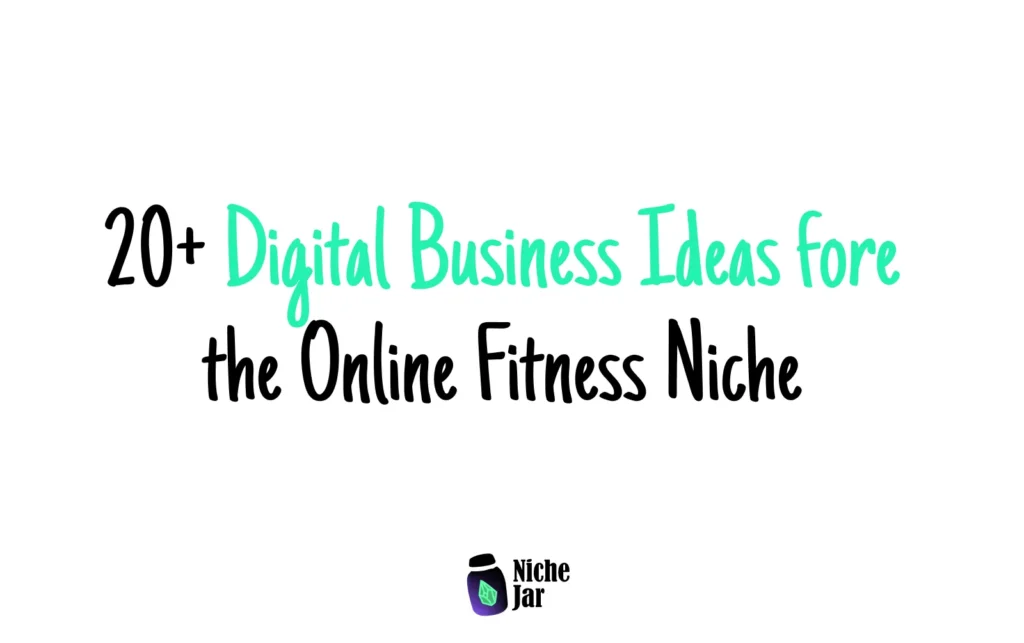
1. Virtual Personal Training
Description: Offer one-on-one fitness coaching through video calls.
Insights: Personalized guidance is highly valued, especially for clients who want accountability and tailored programs.
Practical Tips:
- Use Zoom, Skype, or dedicated coaching apps.
- Create customized programs based on client goals.
- Schedule sessions flexibly to accommodate different time zones.
Challenges & Solutions: Client retention—keep workouts engaging and track progress regularly.
Startup Costs: $200–$1,000 (camera, software, marketing).
Monetization: Hourly sessions, monthly coaching packages.
Example: A trainer started with five clients and grew to 30 monthly sessions by leveraging social media referrals.

2. Online Group Fitness Classes
Description: Host live virtual classes for groups, like HIIT, yoga, or dance workouts.
Insights: Group dynamics increase motivation and community feeling.
Practical Tips:
- Schedule consistent weekly classes.
- Offer beginner, intermediate, and advanced options.
- Encourage social interaction in class chats or community boards.
Challenges & Solutions: Scheduling conflicts—record sessions for on-demand access.
Startup Costs: $100–$500 (streaming setup, marketing).
Monetization: Class passes, monthly subscriptions.
Example: A virtual HIIT studio gained 50+ subscribers in three months using Instagram promotions.
3. Fitness Membership Websites
Description: Create a website offering exclusive workout videos, meal plans, and tutorials.
Insights: Recurring revenue is possible through memberships.
Practical Tips:
- Use platforms like Kajabi, Teachable, or WordPress plugins.
- Offer tiered membership levels with different perks.
- Include community features like forums or live Q&A.
Challenges & Solutions: Content creation is time-consuming—plan content in batches.
Startup Costs: $500–$2,000 (website, video equipment, software).
Monetization: Monthly or annual memberships.
Example: A fitness website offering yoga and strength workouts reached 1,000 paying members in its first year.

4. Workout App Development
Description: Build a mobile app delivering workout programs, tracking progress, or gamifying fitness.
Insights: People increasingly rely on mobile apps for convenience.
Practical Tips:
- Start with a minimum viable product (MVP) with core functionality.
- Include features like progress tracking, reminders, and challenges.
- Gather user feedback for updates.
Challenges & Solutions: Development cost—consider freelance developers or no-code platforms.
Startup Costs: $2,000–$15,000.
Monetization: Subscriptions, in-app purchases, premium features.
Example: A simple home workout app grew to 10,000 downloads by providing daily short routines.
5. Fitness E-books and Guides
Description: Sell downloadable guides covering workouts, nutrition, or lifestyle tips.
Insights: E-books are a low-cost way to monetize expertise.
Practical Tips:
- Focus on niche topics like “15-Minute Workouts for Busy Professionals.”
- Include images and step-by-step instructions.
- Promote via social media and email newsletters.
Challenges & Solutions: Visibility—use free lead magnets to build an audience.
Startup Costs: $50–$300 (writing software, graphics).
Monetization: Direct sales, affiliate links within e-books.
Example: A trainer sold 500 copies of a home workout guide in three months by leveraging Instagram promotions.
6. Nutrition and Meal Planning Services
Description: Offer digital meal plans and nutrition coaching for fitness clients.
Insights: Exercise results improve when paired with proper nutrition.
Practical Tips:
- Use templates for meal plans.
- Offer customization based on dietary restrictions or goals.
- Deliver plans via email, PDF, or app.
Challenges & Solutions: Maintaining variety—update plans regularly and rotate menus.
Startup Costs: $100–$500.
Monetization: Subscription service, one-time consultations.
Example: A nutrition coach created a weekly meal plan subscription, reaching 200 subscribers in six months.

7. Fitness Blogging
Description: Share tips, workout routines, and healthy lifestyle content on a blog.
Insights: Valuable content can drive traffic and create authority in the niche.
Practical Tips:
- Focus on long-tail keywords like “home HIIT workouts for beginners.”
- Include videos, infographics, and downloadable guides.
- Promote content through social media and email newsletters.
Challenges & Solutions: Monetization can take time—combine affiliate links, sponsored posts, and digital product sales.
Startup Costs: $50–$300 (domain, hosting, design).
Example: A fitness blogger built a following of 10,000 monthly readers and monetized through affiliate programs and e-books.
8. YouTube Fitness Channel
Description: Produce workout videos, tutorials, or educational content for fitness enthusiasts.
Insights: Video content is highly engaging and shareable.
Practical Tips:
- Focus on a specific niche (e.g., yoga, HIIT, home workouts).
- Maintain consistent posting schedules.
- Optimize titles, descriptions, and tags for SEO.
Challenges & Solutions: Growing subscribers takes time—engage viewers with challenges or Q&A.
Startup Costs: $200–$1,000 (camera, lighting, editing software).
Monetization: Ad revenue, sponsored videos, memberships.
Example: A YouTube channel offering 10-minute daily workouts reached 50,000 subscribers within a year.
9. Instagram Fitness Coaching
Description: Use Instagram to share workouts, nutrition tips, and motivate followers while offering paid coaching.
Insights: Social media provides free reach and brand building.
Practical Tips:
- Post short video clips, carousel tips, and stories.
- Engage followers with polls and challenges.
- Promote coaching packages or downloadable programs.
Challenges & Solutions: High competition—develop a recognizable personal brand.
Startup Costs: $100–$500 (camera, basic editing tools).
Monetization: Sponsored posts, affiliate products, digital coaching services.
Example: An Instagram fitness coach grew to 20,000 followers in six months and converted 2% into paying clients.

10. Fitness Podcasting
Description: Launch a podcast discussing fitness, nutrition, and motivation.
Insights: Podcasts allow deep engagement with your audience and can be monetized in multiple ways.
Practical Tips:
- Keep episodes 20–40 minutes.
- Interview experts and share actionable tips.
- Promote on social media and podcast directories.
Challenges & Solutions: Building an audience—cross-promote with other podcasters or social media channels.
Startup Costs: $100–$500 (microphone, hosting).
Monetization: Sponsorships, affiliate products, premium content.
Example: A fitness podcast reached 5,000 listeners per episode in its first year by focusing on beginner-friendly workouts.
11. Online Fitness Challenges
Description: Organize virtual challenges, like 30-day yoga, weight loss, or strength-building programs.
Insights: Challenges motivate participants through goals, community, and accountability.
Practical Tips:
- Use Facebook groups, Slack, or Discord for community interaction.
- Provide daily or weekly instructions and check-ins.
- Include small prizes or recognition for completion.
Challenges & Solutions: Engagement drop-off—send reminders and encouragement via email or notifications.
Startup Costs: $50–$500.
Monetization: Registration fees, sponsorships, or affiliate products.
Example: A 30-day home workout challenge attracted 150 participants in the first month using Instagram promotions.
12. Digital Fitness Planners
Description: Create downloadable planners for tracking workouts, nutrition, and goals.
Insights: Many clients appreciate structured guidance and accountability tools.
Practical Tips:
- Design attractive, user-friendly PDFs or interactive planners.
- Include templates for weekly workouts, meal plans, and progress tracking.
- Promote through social media, blogs, and email lists.
Challenges & Solutions: Differentiation—offer niche-focused planners (e.g., runners, beginners, postpartum).
Startup Costs: $50–$200.
Monetization: Direct downloads, subscriptions, or bundled with coaching programs.
Example: A digital fitness planner for women over 40 sold 300 copies in two months via Etsy.

13. Affiliate Marketing for Fitness Products
Description: Promote fitness-related products like supplements, equipment, or apparel and earn commissions.
Insights: Affiliate marketing can supplement other digital fitness businesses.
Practical Tips:
- Review products and provide honest recommendations.
- Integrate links in blogs, social media, and email campaigns.
- Focus on products relevant to your target audience.
Challenges & Solutions: Low trust—only promote products you genuinely recommend.
Startup Costs: Minimal, $0–$100 for website or marketing tools.
Monetization: Affiliate commissions (5–30% per sale).
Example: A fitness blogger earned $500/month by promoting resistance bands and nutrition products.
14. Online Yoga Studio
Description: Launch a fully digital yoga studio offering live and pre-recorded classes.
Insights: Yoga has a wide online following, and beginners seek accessible virtual classes.
Practical Tips:
- Offer different levels: beginner, intermediate, advanced.
- Include thematic sessions (stress relief, flexibility, strength).
- Provide class recordings for on-demand access.
Challenges & Solutions: Retention—offer packages and loyalty programs.
Startup Costs: $300–$1,000 (camera, lighting, website).
Monetization: Class subscriptions, single-class purchases.
Example: A virtual yoga studio grew to 100 monthly subscribers in three months through Instagram promotions.
15. Pilates or Barre Virtual Classes
Description: Teach Pilates or barre workouts through live streams or pre-recorded sessions.
Insights: Pilates and barre enthusiasts value professional guidance for form and posture.
Practical Tips:
- Keep classes 30–60 minutes.
- Offer equipment-free and minimal-equipment variations.
- Record classes for repeat viewing.
Challenges & Solutions: Competition—target specific demographics like postnatal women or seniors.
Startup Costs: $200–$800.
Monetization: Monthly subscriptions, single-class fees.
Example: A Pilates instructor attracted 50 paying members in two months by targeting local social media groups.

16. HIIT Online Programs
Description: Offer high-intensity interval training programs that users can follow online.
Insights: HIIT is popular due to its efficiency and measurable results.
Practical Tips:
- Provide beginner, intermediate, and advanced routines.
- Include downloadable schedules or video guides.
- Encourage accountability with private communities or check-ins.
Challenges & Solutions: Safety concerns—give clear instructions and modification options.
Startup Costs: $100–$500.
Monetization: Program sales, subscriptions, affiliate fitness equipment.
Example: A 4-week HIIT online course gained 100 participants through Instagram ads.
17. Strength Training Coaching Online
Description: Provide online coaching for strength training using videos, form correction, and personalized plans.
Insights: Strength training is in demand among beginners and gym-goers alike.
Practical Tips:
- Offer one-on-one sessions or small-group coaching.
- Include progression plans to track client improvements.
- Share video demonstrations for proper technique.
Challenges & Solutions: Ensuring correct form remotely—use video analysis and client-submitted clips.
Startup Costs: $200–$1,000.
Monetization: Coaching packages, subscription programs.
Example: A coach doubled their client base by offering weekly form-check video reviews.
18. Prenatal/Postnatal Fitness Programs
Description: Create specialized programs for expecting and new mothers.
Insights: Many women seek safe, guided fitness options during and after pregnancy.
Practical Tips:
- Consult with healthcare professionals to ensure safe exercises.
- Offer both live and on-demand sessions.
- Provide modifications for all trimesters or postnatal stages.
Challenges & Solutions: Safety concerns—include disclaimers and educate on modifications.
Startup Costs: $200–$800.
Monetization: Subscription, program bundles.
Example: A postnatal program attracted 75 participants in two months by partnering with parenting blogs.

19. Fitness Merchandise & Apparel
Description: Sell branded fitness apparel, resistance bands, or workout gear online.
Insights: Merchandise builds brand loyalty and adds a tangible revenue stream.
Practical Tips:
- Start with print-on-demand services to reduce inventory costs.
- Promote products alongside online courses or social media content.
- Create limited edition collections for exclusivity.
Challenges & Solutions: Inventory risk—start small and scale based on demand.
Startup Costs: $200–$1,000 (design, samples, marketing).
Monetization: Product sales, bundles with coaching programs.
Example: A trainer sold branded resistance bands to 100 clients in the first month, generating $2,000 revenue.
20. Corporate Wellness Programs
Description: Offer digital wellness programs to companies for employee health and engagement.
Insights: Companies invest in wellness to improve productivity and reduce healthcare costs.
Practical Tips:
- Provide tailored programs: fitness challenges, mindfulness, or group workouts.
- Offer progress tracking dashboards for HR departments.
- Schedule regular live sessions or workshops.
Challenges & Solutions: Securing contracts—start with small businesses or pilot programs.
Startup Costs: $500–$2,000.
Monetization: Corporate subscriptions, program licensing.
Example: A small digital wellness provider signed three corporate clients within six months.
21. Online Fitness Certification Courses
Description: Offer courses to train aspiring fitness instructors online.
Insights: Growing demand for certified online trainers creates a sustainable business model.
Practical Tips:
- Partner with recognized certification bodies for credibility.
- Offer flexible learning modules with assessments.
- Provide ongoing support or mentorship.
Challenges & Solutions: Accreditation—ensure courses meet industry standards.
Startup Costs: $1,000–$5,000 (course creation, platform).
Monetization: Course fees, membership access for alumni.
Example: A digital certification program trained 50 students in its first year, generating consistent revenue.
22. Fitness Community Platforms
Description: Build a paid community for fitness enthusiasts offering challenges, resources, and support.
Insights: Community-driven platforms encourage engagement and recurring revenue.
Practical Tips:
- Use platforms like Mighty Networks or Circle.
- Offer exclusive content, live sessions, and peer support.
- Encourage member interaction with challenges and forums.
Challenges & Solutions: Maintaining engagement—regular content updates and moderation help.
Startup Costs: $200–$1,000.
Monetization: Membership subscriptions, premium content.
Example: A private online fitness community reached 300 paying members in one year by offering weekly live workouts and Q&A sessions.
The online fitness niche offers numerous opportunities to turn your passion into a profitable digital business. From virtual personal training to creating apps, blogs, and membership platforms, the options are diverse. Remember, every journey starts small, and consistent effort, creativity, and connection with your audience are key.
If you’re just starting, consider experimenting with low-cost ideas like social media coaching, e-books, or online challenges. Over time, you can expand into memberships, apps, or full-fledged digital platforms. Persistence, learning from feedback, and delivering value will help you grow sustainably.
Exploring other niches on Nichejar.com can also provide inspiration and complementary business ideas. Take one step at a time, and remember that success is often a product of consistent, thoughtful action.
TLDR
In short:
- Virtual personal training and online group classes are high-demand services with recurring revenue potential.
- Membership websites and fitness apps allow for scalable digital business models.
- Fitness content creation (blogs, YouTube, Instagram, podcasts) builds authority and drives income.
- Digital products like e-books, meal plans, and workout guides offer low-cost entry points.
- Specialized programs (prenatal fitness, HIIT, strength training) target niche audiences for higher engagement.
- Merchandise, certification courses, and corporate wellness programs diversify income streams.
